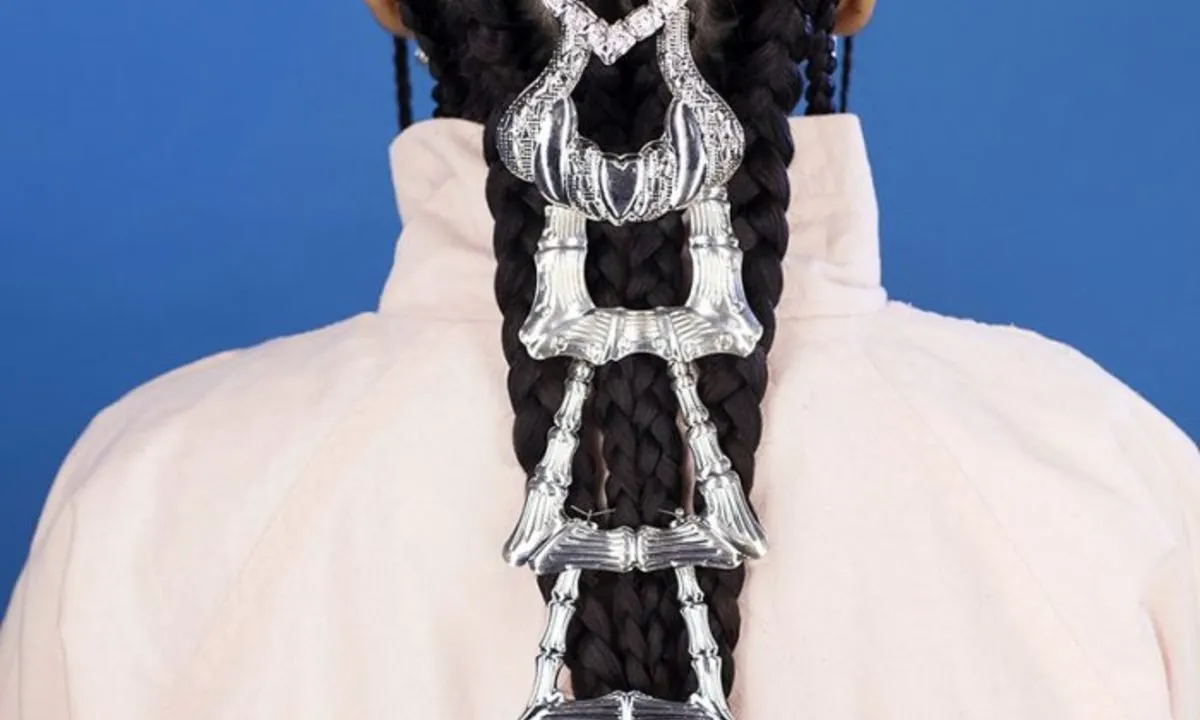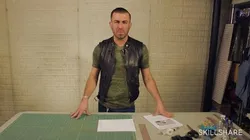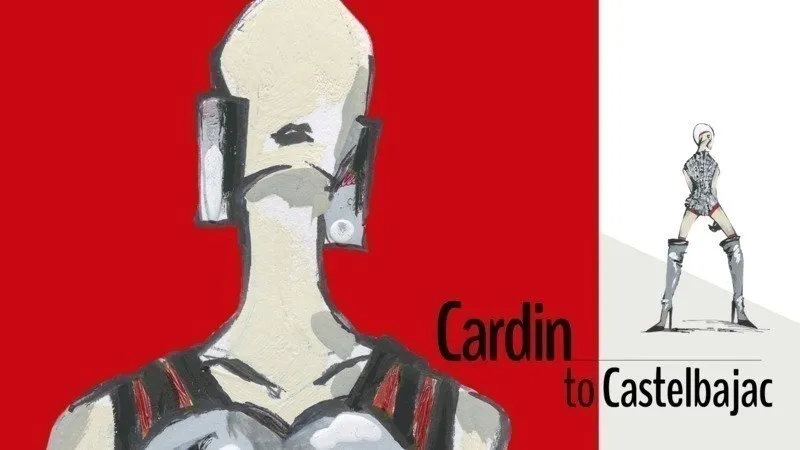
Fashion as Design 
This course explores the complex and ever-evolving field of fashion design, examining its potential for social, political, cultural, economic, and environmental change. Students will learn how to use fashion as a tool for meaningful and lasting impacts on the world. ▼
ADVERTISEMENT
Course Feature
![]() Cost:
Cost:
Free
![]() Provider:
Provider:
Coursera
![]() Certificate:
Certificate:
Paid Certification
![]() Language:
Language:
English
![]() Start Date:
Start Date:
31st Jul, 2023
Course Overview
❗The content presented here is sourced directly from Coursera platform. For comprehensive course details, including enrollment information, simply click on the 'Go to class' link on our website.
Updated in [March 06th, 2023]
Fashion as Design is a course that explores the history, development, and impact of garments over time. Through a selection of more than 70 garments and accessories from around the world, students will gain critical tools to appreciate and contextualize fashion design. The course will also investigate garments through multiple lenses including politics, identity, and economics. Additionally, students will gain an understanding of the lifecycle of clothing, from its design and production to its marketing, distribution, and consumption. By the end of the course, students will have a better comprehension of the choices they make about fashion with respect to the visual language of dress, individual and collective identities, and issues such as labor practices, sustainability, and body politics.
[Applications]
Upon completion of the course Fashion as Design, students can apply their knowledge to their everyday lives by being more mindful of the choices they make when it comes to fashion. They can use their understanding of the history, development, and impact of garments to make more informed decisions about what they wear and how they wear it. Additionally, they can use their knowledge of the lifecycle of clothing to make more sustainable choices when it comes to fashion. Finally, they can use their understanding of the visual language of dress, individual and collective identities, and issues such as labor practices, sustainability, and body politics to make more conscious decisions about their fashion choices.
[Career Paths]
1. Fashion Designer: Fashion designers create clothing and accessories for consumers. They must be able to interpret trends in the fashion industry and create designs that are both aesthetically pleasing and functional. They must also be able to work with a variety of materials and fabrics, and have a good understanding of the production process. The demand for fashion designers is expected to grow as the industry continues to expand.
2. Fashion Merchandiser: Fashion merchandisers are responsible for selecting and purchasing clothing and accessories for retail stores. They must be able to identify trends in the fashion industry and select items that will appeal to their target audience. They must also be able to negotiate prices with suppliers and manage inventory. The demand for fashion merchandisers is expected to grow as the industry continues to expand.
3. Fashion Stylist: Fashion stylists are responsible for creating looks for clients. They must be able to interpret trends in the fashion industry and create looks that are both aesthetically pleasing and functional. They must also be able to work with a variety of materials and fabrics, and have a good understanding of the production process. The demand for fashion stylists is expected to grow as the industry continues to expand.
4. Fashion Photographer: Fashion photographers are responsible for capturing images of clothing and accessories for editorial and advertising purposes. They must be able to interpret trends in the fashion industry and create images that are both aesthetically pleasing and functional. They must also be able to work with a variety of materials and fabrics, and have a good understanding of the production process. The demand for fashion photographers is expected to grow as the industry continues to expand.
[Education Paths]
Recommended Degree Paths:
1. Bachelor of Arts in Fashion Design: This degree program provides students with the skills and knowledge needed to design and create fashion garments. Students learn about the history of fashion, the principles of design, and the techniques used to create garments. They also learn about the business side of fashion, including marketing, merchandising, and retailing. This degree program is ideal for those interested in pursuing a career in fashion design.
2. Master of Science in Fashion Merchandising: This degree program focuses on the business side of fashion, including marketing, merchandising, and retailing. Students learn about the principles of fashion merchandising, the latest trends in the industry, and the strategies used to promote and sell fashion products. This degree program is ideal for those interested in pursuing a career in fashion merchandising.
3. Master of Arts in Fashion Studies: This degree program focuses on the history and culture of fashion. Students learn about the history of fashion, the principles of design, and the techniques used to create garments. They also learn about the business side of fashion, including marketing, merchandising, and retailing. This degree program is ideal for those interested in pursuing a career in fashion studies.
4. Doctor of Philosophy in Fashion Design: This degree program focuses on the research and development of fashion design. Students learn about the history of fashion, the principles of design, and the techniques used to create garments. They also learn about the business side of fashion, including marketing, merchandising, and retailing. This degree program is ideal for those interested in pursuing a career in fashion design research and development.
Developing Trends:
1. Sustainable Fashion: Sustainable fashion is becoming increasingly popular as consumers become more aware of the environmental impact of the fashion industry. Sustainable fashion focuses on using materials and processes that are environmentally friendly and reduce waste.
2. Digital Fashion: Digital fashion is becoming increasingly popular as technology advances. Digital fashion focuses on using technology to create garments that are unique and personalized.
3. Wearable Technology: Wearable technology is becoming increasingly popular as technology advances. Wearable technology focuses on using technology to create garments that are functional and have additional features such as tracking fitness and health data.
Course Syllabus
Introduction
Wearing certain garments can inspire heroic transformations, while heroes can elevate everyday clothing to iconic status. In this module, you will discover the relationship between aspiration, achievement, adulation, and attire through a wide range of heroes—and even imagine yourself as a space hero in the future.Heroes
When we put on clothes, we change the shape and outline of our bodies—sometimes profoundly. The silhouettes we adopt are determined by everything from shifting trends in fashion to what looks and feels good. This week, we explore how clothes shape the body and how cultural constructions of the body shape clothes.Silhouettes
The French word couture means "dressmaking" or "sewing,” and often refers to one-of-a-kind, primarily handmade garments intended for a specific individual. This module approaches couture from a broader perspective, exploring the complex processes—from traditional handcrafting to the use of new technologies—that go into the making of high-end and everyday garments.Coutures
This module examines the lifecycle of garments, an often overlooked aspect of fashion that many individuals and companies are addressing with growing urgency. How do garments begin, how do they end, and how does the cycle of production, consumption, and disposal impact the world?Lifecycle
Modesty has many varied expressions that can be informed by social, religious, or political identifications, as well as by personal choice. But whether covered up or exposed, our bodies are often battlegrounds for continually shifting societal claims around morality, agency, and etiquette.Modesty
What we wear and how we wear it can communicate messages, create group identification, borrow and remake existing styles, or subvert a garment’s traditional associations. While choosing and wearing clothes is an act of personal expression, it is also a response to many of the topics addressed in the preceding weeks of this course. In this final week, we look at the ways in which clothing allows us to feel connected to others and to stand out.Course Provider

Provider Coursera's Stats at AZClass
Discussion and Reviews
0.0 (Based on 0 reviews)
Explore Similar Online Courses

RHEL 8: Creating and Configuring File Systems

An Introduction to Probability in Computing

Python for Informatics: Exploring Information

Social Network Analysis

Introduction to Systematic Review and Meta-Analysis

The Analytics Edge

DCO042 - Python For Informatics

Causal Diagrams: Draw Your Assumptions Before Your Conclusions

Whole genome sequencing of bacterial genomes - tools and applications

Make Your Own Clothing: Introduction to Garment Construction

Gaultier to Louboutin: Style & Strategy in French Fashion


Start your review of Fashion as Design